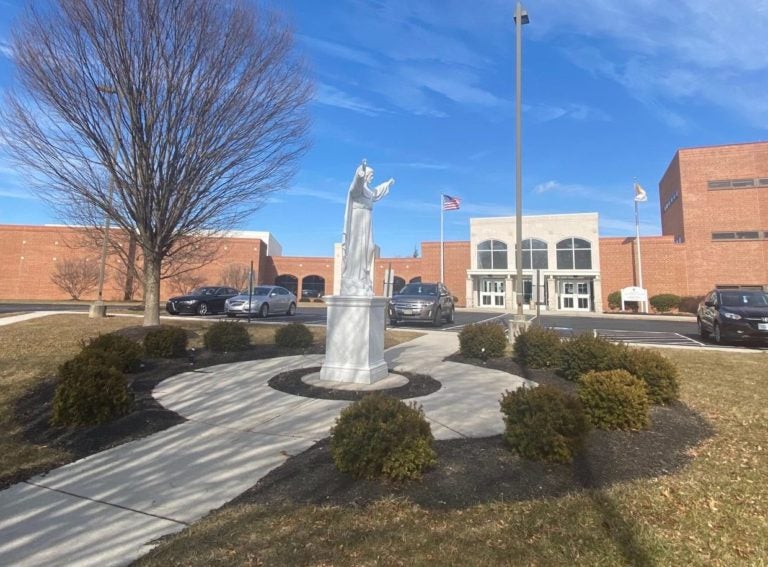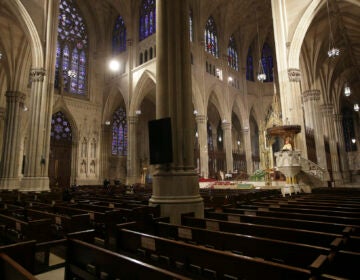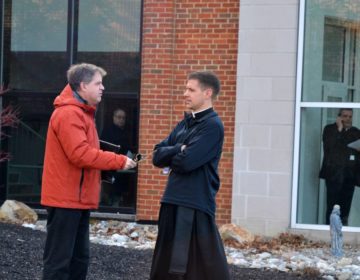Determining Harrisburg Diocese’s assets will be complicated process under bankruptcy
Facing up to $100 million in claims from victims of sexual abuse, the Roman Catholic Diocese of Harrisburg filed for bankruptcy on Wednesday.

The Roman Catholic Diocese of Harrisburg in Lower Paxton Township, Dauphin County. (Joseph Darius Jaafari/PA Post)
Facing up to $100 million in claims from victims of sexual abuse, the Roman Catholic Diocese of Harrisburg filed for bankruptcy on Wednesday. But what the diocese actually owns – and how that affects victims with current and future claims – is likely to be a complicated process involving religious and civil laws.
And while parishioners and employees will not likely be immediately affected by the bankruptcy — people will still clock in and receive paychecks, and church services, for the foreseeable future, won’t be interrupted — the biggest uncertainty will be felt by victims of sexual abuse who are still pursuing legal claims, bankruptcy attorneys say.
Harrisburg is the 26th Catholic diocese in the nation to seek Chapter 11 protection, which is the initial step the institution takes to restructure its finances and pay off debts. Past cases have shown that determining the value of church assets won’t be an easy task, according to Jonathan Lipson, a bankruptcy attorney and researcher at Temple University who’s written on religious institutions that have filed for Chapter 11.
Religious laws that describe property ownership are different than secular corporate laws, so it’s unclear how much the diocese can claim as an asset, he said.
“The structure of the diocese is determined in part by canon law,” he said. “And I think bankruptcy courts are uncomfortable trying to apply canon law or apply, you know, general corporate law to it by analogy.”
Churches own many types of property, not just building where worship takes place. (The Catholic Church is actually one of the largest landowners in the world.) Representing parishes, schools, cemeteries and other properties in 15 counties, the Harrisburg diocese claimed $181 million in total assets in 2018, including properties valued at $20.4 million, according to its most recent financial audit.
But, as has been the case in other bankruptcy cases, many of those properties are held in trust by local parishes. Though the value of those properties is counted in the diocese’s balance sheet, they are “not in the possession” of the diocese, according to the audit.
In the bankruptcy filing submitted Wednesday, the diocese goes to great lengths to distinguish between what assets are owned and administered by the bishop and what is held by individual parishes. According to the filing, “The assets of each Parish Charitable Trust are to remain the sole property of the applicable Parish Charitable Trust and may not be commingled with the assets of any other parish, trust, or other entity associated with the Diocese. Further, assets of each Parish Charitable Trust … shall not be subject (in whole or in part) to voluntary or involuntary assignment, transfer, anticipation, legal process, or judgments or claims of creditors… .”
“The diocese will say, ‘no, no, no, your honor.’ And for whatever reasons, they don’t actually own that property. It’s owned by other entities,” Lipson said. “And so that’s the key thing that people fight over. And it’s not really possible to confirm a plan until there’s been some resolution of that.”
In 2018, the Catholic Diocese of Erie began transferring property ownership to local parishes, the Erie Times-News reported at the time, signaling to some that other dioceses could do the same.
In past cases, other dioceses initially said they owned less property in order to claim that the court-ordered payouts to victims couldn’t be paid in full. In Portland, for example, the diocese first said it owned only $20 million in assets, but independent assessments put the actual value at more than $500 million, well over the $373 million the diocese owed.
As far as the church’s fear with accumulating future debts from people who might file a claim against Harrisburg’s Diocese, filing for chapter 11 halts all current and future cases until the settlement is finished. For those with pending litigation against the church who might be expecting money, those payouts will roll into the church’s liabilities in the bankruptcy case.
“For the most part, the filing of a bankruptcy case kind of marks the end of the old era and the beginning of a new era,” said Marie Reilly, a commercial law professor at Penn State who is an expert in diocese bankruptcy cases.
Reilly said bankruptcy could also be a last-ditch effort for the church to get survivors to come forward and file a financial claim, essentially wiping the slate clean of past harms.
“In bankruptcy, all claimants share. So, you know, you sort of all step up to the table to receive compensation from an identified pool of funds. And everybody has a chance of being fairly compensated,” she said. “For an organization like a Catholic dioceses, that has a certain moral appeal to it.”
PA POST
WHYY is your source for fact-based, in-depth journalism and information. As a nonprofit organization, we rely on financial support from readers like you. Please give today.




